Next year is shaping up to be a very strong year for M&A activity in the Knowledge Economy. In order to assist your preparation for 2021, take a look at our M&A Preview, in which we discuss the following eight key trends:
- The adoption of digital is accelerating
- Emerging technologies are being commercialised rapidly
- There is a convergence across the sector and delivery models are blending
- Private equity participation in the knowledge economy is increasing
- Next-generation technology platforms are emerging
- Vertical software solutions are playing an increasing role
- Buyers are returning to nearshore locations for access to new skills
- Shareholders are aligning expectations and addressing structural risks
This article provides an overview of the nine steps involved in a quality sales process of a Knowledge Economy firm.
Taking you from valuation to company disposal with minimum pain along the way. To ensure the process runs smoothly and to mitigate any risks, as well as maximizing the value of your firm, adequate planning and preparation is the key.
Step 1: Aligning Shareholders, targeting value and assessing risk
First, it is crucial to align your shareholders around the type of deal you want to do, and to establish a target valuation and identify any potential issues that may affect your sale. To place yourself in a strong negotiation position with your bidders, it is important to understand the following factors:
- Return on Investment (ROI) based on your current financial performance and growth prospects
- Buyer risk factors that may cause them to downgrade your firm’s value
- A market premium based on current market activity
- A synergy factor based on your ability to positively impact a buyer’s business
Our Strategic Review process assesses the risk factors that may cause problems or affect the maximum value. Once identified, you can put a plan in place to mitigate or eliminate the risks and maximize the value of your firm in the process. We also advise on the best approach and timing to run your sale process. Should you run a full auction or a more tactical engagement?
Step 2: Maintaining business as usual
Ensuring realization of the financial performance you are communicating to buyers during the process is critical to protecting the value of offers and avoiding delays to the sale process.
Sufficient resources need to be lined up to manage business as usual activities, in addition to the preparation and execution of the sale process. Nominating a Deal Team to participate throughout is important, particularly in order to be ready for momentum at launch.
It may be beneficial to employ advisors at this stage to reduce the management load of the sale process.
Step 3: Identifying buyers and building the buyer list
Using the intelligence from your team and your M&A advisor, form a comprehensive but carefully selected list of potential bidders and/or buyers who may be interested in acquiring your knowledge economy company.
Consider global buyers across industries and include private equity investors if relevant to your exit strategy. Categorize the list into groups based on a view of their potential synergy with your firm, and insight to each buyer’s investment or corporate strategy.
Synergy factors can dramatically improve the price achieved so it’s important to develop a strong story about synergy, customized for each buyer group. Making sure you target the right buyers also reduces management time expended in the process and maximizes confidentiality and interest conversion.
Step 4: Preparation of sale documentation
Your M&A advisor will produce detailed, comprehensive documentation in preparation for the sale of your firm. This comes in three forms:
- The ‘Blind Profile: a two-page marketing document containing the financial, operational, service and client details without disclosing the name of your firm. It will also highlight the buyers’ synergy with your firm and may be tailored to target different categories of buyers.
- The Information Memorandum (IM): a comprehensive document containing all strategic, financial and operational information. This includes financial history and projections, service line descriptions, clients and markets, staff and compensation, assets and liabilities, firm strategy and reasons for the sale.
- A compelling management presentation, which will be customized and used in meetings with bidders.
Documentation is supported by detailed work on the knowledge economy company’s financials, including making appropriate adjustments so that the business is sold based on an optimized and justified level of run-rate revenue and EBITDA.
Step 5: Lining up legal and tax planning experts, and getting due diligence (DD) Ready
Engage lawyers and tax planning experts early to minimize or avoid any issues that may impact on organizational structure and remuneration, contracts, shares, liabilities or company incorporation. Your M&A advisor will be able to recommend a trusted expert if you don’t have access to one.
There can be significant benefits in commissioning a provider to conduct Vendor Due Diligence – a credible, high integrity third-party can provide a very high return by helping you retain control of the sale process – it will minimize disruption, and maximize the number of bidders you can entertain to retain bargaining power.
In almost all cases, procuring a reliable and secure Virtual Data Room will be a cost-effective way to share information with buyers later in the process – it also provides real-time insight to the documents they are reviewing.
Interested buyers will then be invited to sign a Non-Disclosure Agreement (NDA) preventing them from releasing information to third parties and reducing the risk of them trying to poach clients or staff should they be unsuccessful in buying your firm. These buyers will also receive a copy of the IM so they’re aware of the benefits of their purchase, and a Process Letter outlining exactly how the rest of the sale will proceed.
Step 7: Initial offers from interested buyers
The process to solicit initial offers may vary depending on the agreed process.
Typically, interested counterparties will be in a position to make an indicative offer based on the IM and subsequent Q&A – providing this initial offer qualifies them for entry into later stages of the process, including meeting management. However, in some cases it is mutually beneficial to schedule management meetings ahead of indicative offers, for instance to really sell synergy elements relevant to the buyer.
Indicative offers will comprise a total value and the proposed structure of payment, but attention needs to be paid to both the relative value of the offers as well as any contingent risks. They may not necessarily provide the maximum offer value but perhaps offer a higher value upfront with the remainder of the consideration in safer, non-contingent financial instruments such as bank-guaranteed loan notes.
There may be multiple interactions with each bidder, including sharing of tailored equity story and financial analysis, to support the case for higher valuations. A competitive process increases the valuation multiple realized as bidders are forced to increase their bids to compete. Application of a tight process timetable to ensure simultaneous receipt of multiple, competitive offers provides further leverage to drive price and terms.
Step 8: Management Presentations, Due Diligence and Confirmatory Offers
Once you’ve considered the range of Indicative Offers, a selected number of bidders will be invited to participate further. You’ll grant them access to the Virtual Data room to carry out initial due diligence and meet with them to help firm up the investment case, and consider the cultural fit to your firm.
Meantime, your M&A advisor will be negotiating key terms, and potentially encouraging counterparties to put in a pre-emptive bid at the right price (to knock-out other parties and give the exclusive access). This is also a time of maximum leverage to outline terms for management and staff moving across to the buyer – for instance, how management can participate in the buyer’s long-term incentive plans.
Your advisor will also be liaising with your lawyer to draw up a Sales and Purchase Agreement (SPA) and other sale documents.
The remaining bidders will be asked to ‘mark up’ the sale documents and put forward a Confirmatory Offer. There is the opportunity at this point to negotiate any further improvements to the offers, before agreeing to proceed with a selected party on an exclusive basis.
Step 9: Signing and Closing
Post-exclusivity, the chosen buyer will perform confirmatory due diligence. Late-stage DD includes things like third parties talking to your clients, which needs to be managed very carefully.
Much of the negotiation around the SPA will already have been completed, but there is a seemingly endless sequence of steps required to close the deal itself, from preparing disclosure to dealing with multiple legal prerequisites for signing.
Some transactions can be signed (exchanged) and closed simultaneously, but often there be circumstances where there needs to be a split between signing and closing – for instance, publicly-listed firms usually need regulatory approval.
Deal closure itself can be an understated affair, especially if performed remotely. However, it is the day that funds flow, and the first day of life under new ownership – and usually calls for a mutual celebration with your buyer.
Conclusions
Selling your knowledge economy company is complex, sometimes stressful, not without risks, and can take often six months or longer. It is also very rewarding – not just financially, but across other dimensions too. Many owners consider the transaction window as one of the most intellectually stimulating and challenging times of their tenure.
By applying the skills you used to make your business a success in the first place, by preparing assiduously, and by partnering with the right advisors, there is a great chance of achieving your goals.

